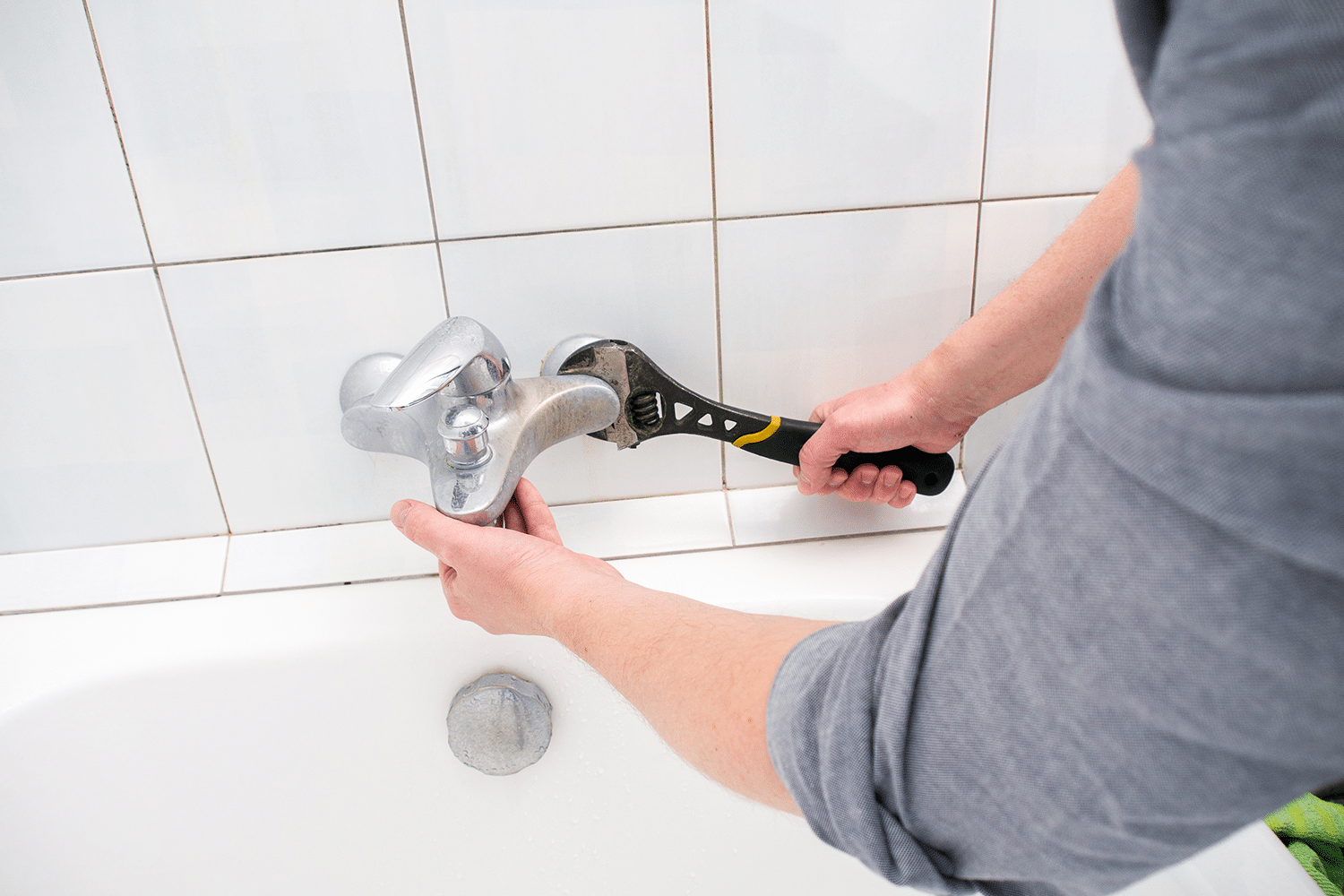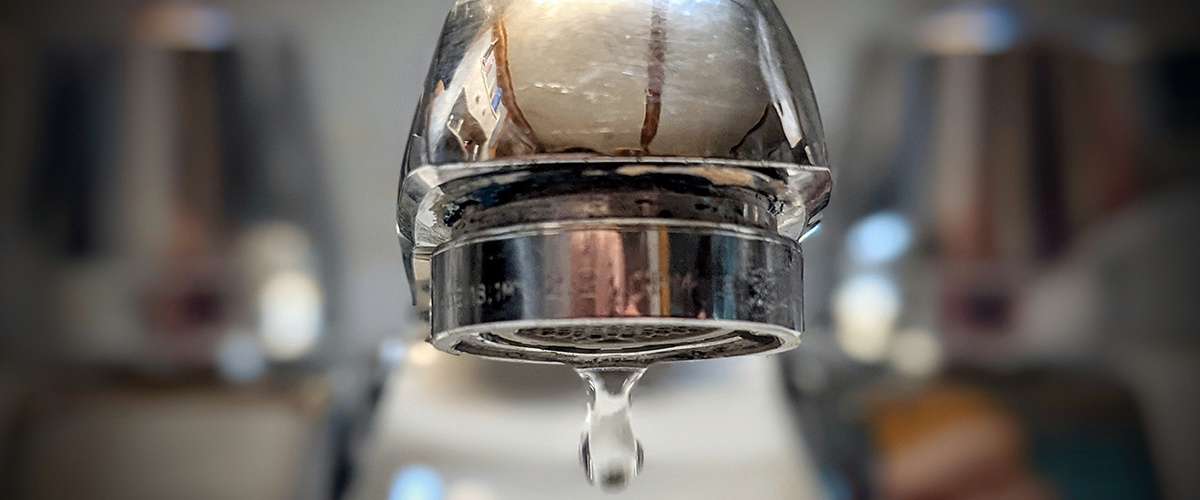Understanding the Significance of Resolving a Dripping Faucet
Understanding the Significance of Resolving a Dripping Faucet
Blog Article
This article further down pertaining to Should I Repair or Replace a Leaky Faucet? is really intriguing. Don't miss it.

Trickling faucets could feel like a minor inconvenience, yet their influence goes beyond simply the inconvenience of the noise. From drainage to sustaining unneeded financial expenses and wellness threats, neglecting a dripping tap can result in different effects. In this post, we'll delve into why it's essential to resolve this usual house issue without delay and efficiently.
Wastage of Water
Ecological Impact
Trickling taps add significantly to water wastefulness. According to the Environmental Protection Agency (EPA), a single faucet trickling at one drip per second can lose greater than 3,000 gallons of water annually. This not only pressures water resources but additionally impacts ecological communities and wildlife depending on them.
Financial Prices
Boosted Water Bills
Past the ecological influence, dripping faucets can inflate water expenses significantly. The collected waste over time equates into higher energy costs, which can have been prevented with prompt repairs.
Prospective Residential Property Damages
Furthermore, long term dripping can lead to damage to fixtures and surfaces surrounding the tap. Water build-up can cause discoloration, deterioration, and even structural concerns if left neglected, resulting in extra repair work costs.
Health Problems
Mold And Mildew and Mildew Growth
The continuous visibility of dampness from a leaking tap produces an ideal setting for mold and mildew growth. These fungis not only compromise interior air top quality yet also pose health threats, especially for individuals with respiratory conditions or allergies.
Waterborne Illness
Stagnant water in dripping taps can end up being a breeding place for microorganisms and various other virus, increasing the risk of waterborne diseases. Contaminants such as Legionella microorganisms prosper in stagnant water, potentially causing significant diseases when consumed or breathed in.
DIY vs. Specialist Fixing
Pros and Cons of DIY Repair
While some may try to fix a dripping tap themselves, do it yourself repair services feature their very own collection of challenges. Without correct knowledge and devices, do it yourself efforts can worsen the issue or cause incomplete repair services, lengthening the trouble.
Benefits of Employing a Specialist Plumber
Working with a professional plumber ensures that the underlying cause of the dripping tap is addressed efficiently. Plumbing professionals possess the experience and devices to detect and repair faucet problems efficiently, saving time and reducing the threat of more damages.
Step-by-Step Overview to Taking Care Of a Dripping Tap
Devices Needed
Prior to trying to take care of a trickling tap, gather the needed devices, including a flexible wrench, screwdrivers, replacement parts (such as washing machines or cartridges), and plumber's tape.
Common Tap Issues and Their Solutions
Recognize the sort of faucet and the details concern creating the drip. Typical issues consist of worn-out washing machines, rusty shutoff seats, or malfunctioning O-rings. Describe producer directions or online tutorials for detailed guidance on fixings.
Preventive Measures
Routine Upkeep Tips
To prevent trickling taps, perform routine upkeep such as cleansing aerators, checking for leakages, and changing worn-out components immediately. Furthermore, think about installing water-saving tools or updating to extra reliable fixtures.
Value of Prompt Fixes
Dealing with leaking faucets as soon as they're seen avoids additional water waste and prospective damage, ultimately conserving both water and money in the future.
Effect On Residential Or Commercial Property Value
Understanding of Well-Maintained Residential Or Commercial Property
Preserving a building in good condition, including dealing with maintenance issues like dripping faucets, improves its regarded value and desirability amongst potential purchasers or tenants.
Influence on Resale Value
Characteristics with well-maintained plumbing components, consisting of taps, command higher resale worths in the property market. Addressing leaking taps can add to a favorable perception throughout residential or commercial property examinations and negotiations.
Environmental Obligation
Individual Contribution to Conservation
Taking duty for taking care of dripping taps straightens with more comprehensive initiatives towards water preservation and ecological sustainability. Every individual's actions jointly make a considerable impact on maintaining priceless sources.
Lasting Living Practices
By focusing on punctual repair work and embracing water-saving routines, individuals contribute to lasting living techniques that profit both existing and future generations.
Verdict
Addressing a trickling faucet surpasses mere convenience; it's a crucial action toward conserving water, minimizing economic prices, and securing wellness and residential or commercial property. Whether with do it yourself fixings or expert aid, taking action to repair trickling taps is a little yet impactful method to promote responsible stewardship of sources and add to a much healthier, extra sustainable future.
How to Fix a Leaky Faucet: Step-by-Step Repair Guide
A leaky faucet may seem like a simple annoyance, but if it's not fixed promptly, that leak could cost hundreds to potentially thousands. From water damage to mold, mildew, and high water bills, even a tiny leak can be catastrophic if left unattended. Damage like this can even affect the overall value of your home, so it's important to take the right approach for leaky faucet repair. You may need the help of a plumber in some cases, but we've got a few tips you can try on how to fix a leaky faucet before calling the pros.
Four Faucet Types
When you're learning how to fix a leaky faucet, the first step is knowing what kind of faucet you're working with! There are four common types.
Cartridge Faucets
Cartridge faucets come in one- or two-handled varieties. In one-handled cartridge faucets, hot and cold water combines in a single cartridge. In the two-handled versions, hot and cold water are controlled separately and mixed in the faucet.
Ball Faucets
Ball faucets have a single lever you push up and down to adjust the pressure and rotate to change the temperature. A slotted metal ball controls the amount of water allowed into the spout.
Compression Washer Faucets
They're the oldest type of faucet, but they're still used in many homes — especially older ones. Compression faucets have two separate handles that, when turned, raise or lower the washer that seals a water valve. This valve stops water from flowing through the faucet when it is turned off.
Disc Faucets
Disc faucets rarely need to be repaired due to their maintenance-free design. The water flow is controlled by two discs — the upper one raises and lowers against a fixed lower disc, creating a watertight seal. If your disc faucet starts leaking, you may need to replace the seals or clean residue buildup from the inlets.
Fixing a Leaky Faucet
Step 1: Turn Off the Water
Whether you're learning how to fix a leaky bathtub faucet or how to fix a leaky kitchen faucet, always turn off the water supply to your working area when you're fixing a leak. The last thing you want is a flood added to your list of things to fix.
Look for the shutoff valves below your sink or around the tub and turn them clockwise to stop the water flow. If your faucet doesn't have shutoff valves, you may need to turn off the water for the whole house. Check to make sure it's off by turning the faucet on. If nothing comes out, you're ready to start the repair.
Step 2: Take Apart the Faucet
How you disassemble your faucet depends on the type of fixture you have. You can use a flathead screwdriver to remove the caps on top of the handle or handles for cartridge and compression faucets. Inside, you should see handle screws. Unscrew these with a screwdriver to remove the handle.
Disc- and ball-style faucets will typically have an inlet screw near the handle, and removing that will reveal the interior of the faucet.
Detach the Valve Stem
For cartridge- and compression-style faucets, you'll see the inner valve stem or cartridge once you remove the faucet handles. If you have a compression faucet, unscrew the brass valve stem. If you have a cartridge faucet, pull out the cartridge. If your cartridge has been in place for a while, it may require some tools or extra force to remove it due to mineral deposits.
Examine and Replace Parts
Once you've removed the parts, check them out to confirm what needs to be replaced. You may see corroded rubber washers, O-rings, stems, or cartridges. On a ball-style faucet, check the seats and springs for damage.
If you need to repair a leaky disc faucet, check the inlet and seals on the lower disc.
Once you determine what parts must be replaced, visit your local hardware store. Bring the damaged parts with you to ensure you can purchase the correct components to replace them.
Clean Valves and Faucet Cavity
If you've removed a stem or cartridge, you may notice mineral buildup in the faucet's threads. Use white vinegar to clean the valve seat by soaking it for a few minutes, then scrub it away with a soft toothbrush and rinse with warm water. You can also clean the interior of the faucet in the same way.
Reassemble the Faucet
Once your faucet is cleaned and the required parts have been replaced, it's time to reassemble it. Put the pieces back together and slowly turn the water supply back on. Doing this slowly is crucial because too much initial water pressure can damage the new hardware you've just installed.
https://homewarranty.firstam.com/blog/how-to-fix-leaky-faucet

As a serious person who reads about Why It's Important to Fix Leaky Faucets, I imagined sharing that excerpt was worth the trouble. Appreciated our piece? Please quickly share it. Help another person check it out. I love your readership.
Report this page